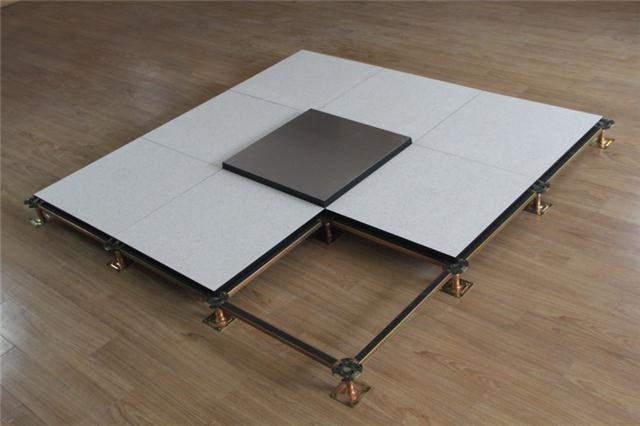NEWS TAG
brand
Indoor Raised Access Floors: Analysis Of All The Advantages & Disadvantages
An interior raised floor is a system in which porcelain tile is installed on a modular structure so that the floor surface is raised above the floor base. This allows for the creation of a technical compartment that can accommodate all the systems needed to configure a room, from electrical cables to plumbing and air conditioning systems, computer networks, etc. This feature makes interior raised access floors an efficient and less intrusive solution than traditional installation techniques.

Indoor And Outdoor Raised Access Floors
Porcelain stoneware raised access floors are very popular and used for outdoor environments in private homes, thanks to their unmatched durability and resistance to atmospheric agents. However, the floating technique is also widely used today for indoor raised access floors, which are particularly popular in offices and shops due to their ease of installation and outstanding aesthetic qualities.
Indoor raised access floors also facilitate the installation of systems, as they are designed to position all electrical, water, and computer cables below ground level, thus avoiding masonry work and guaranteeing quick access to the entire structure: simply lift the various plates to inspect the desired area. This is why offices and stores prefer floating solutions for their interior floors.
Installation Of Indoor Raised Access Floors
The simplicity of installing raised access floors indoors is certainly the first of all the advantages of this choice, which can significantly reduce the time needed for construction. First of all, the installation of an indoor raised access floor does not require the removal or modification of the pre-existing surface and allows the best preservation of the original floor covering.
The installation begins with the design phase of the grid, which defines the position of the support columns and installations. Then comes the installation of the structure, the crosspieces and the anti-dust and anti-vibration joints. Finally, the porcelain stoneware panels are placed on the structure and the walking surface becomes immediately accessible.
Advantages And Disadvantages Of Indoor Raised Access Floors
Like all types of installation, raised access floors to have advantages and limitations that should be known before making a decision.
In addition to the simplicity of installation, which, as we have seen, is the real added value of indoor raised access floors, the main advantages of this solution are as follows:
Speed of installation and savings in materials and labor;
No masonry work is required and the original floor covering is preserved;
Installations that can be inspected from any plate at any time;
Environmentally friendly solution, requiring no chemical adhesives for installation;
Maximum design flexibility, even during the execution phase;
Total versatility in case of change of use;
Maximum customization thanks to a wide variety of formats and finishes, ideal for any type of environment and style;
Aesthetic quality combined with advanced technical content;
Simple disassembly, replacement, and reconfiguration;
Sound absorption and insulation between rooms separated by the ceiling;
Also suitable for underfloor heating solutions;
Elasticity in response to changes in humidity.
The floating solution is therefore a high-performance answer not only for exterior floors, but also for interior raised access floors.
Indoor raised access floors, on the other hand, are not suited to particularly complex installation patterns and require a uniform, well-maintained bearing surface to avoid the risk of unwanted movement or sagging of the raised access floor panels over time.
